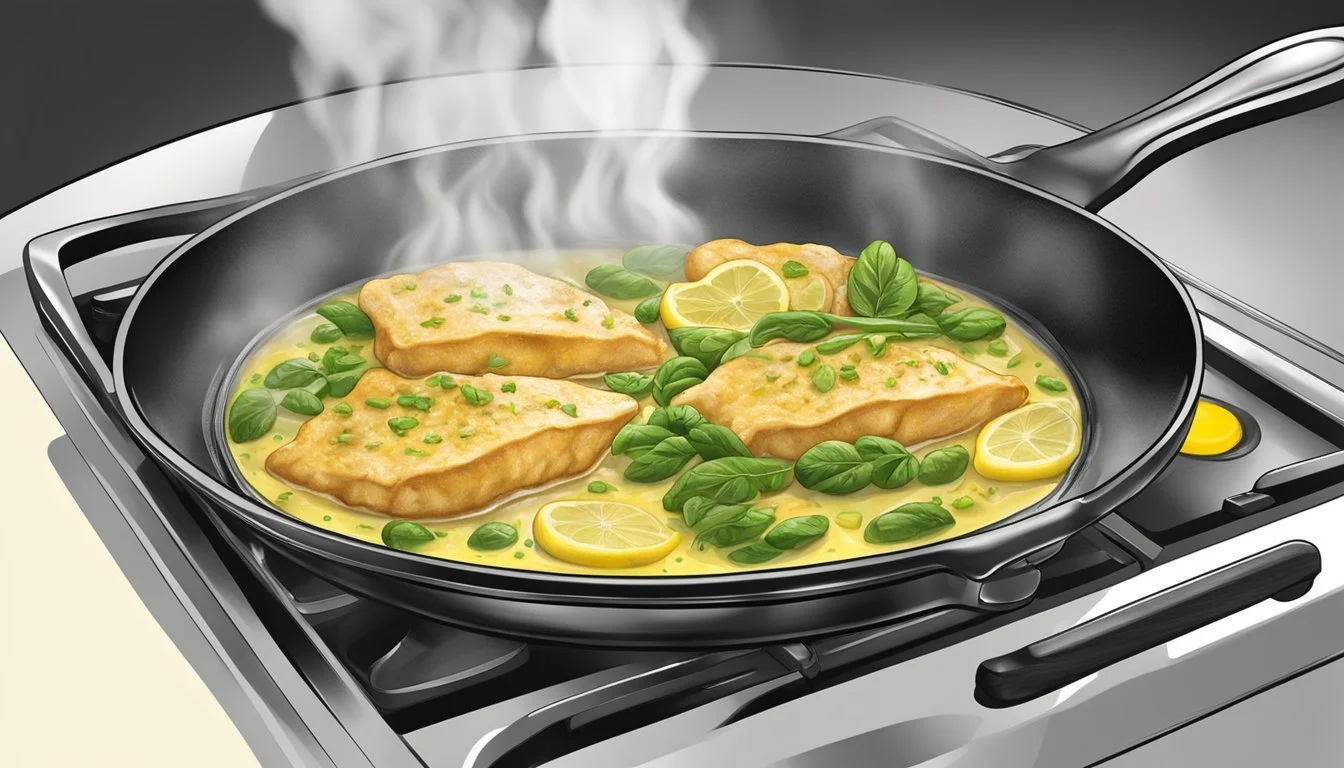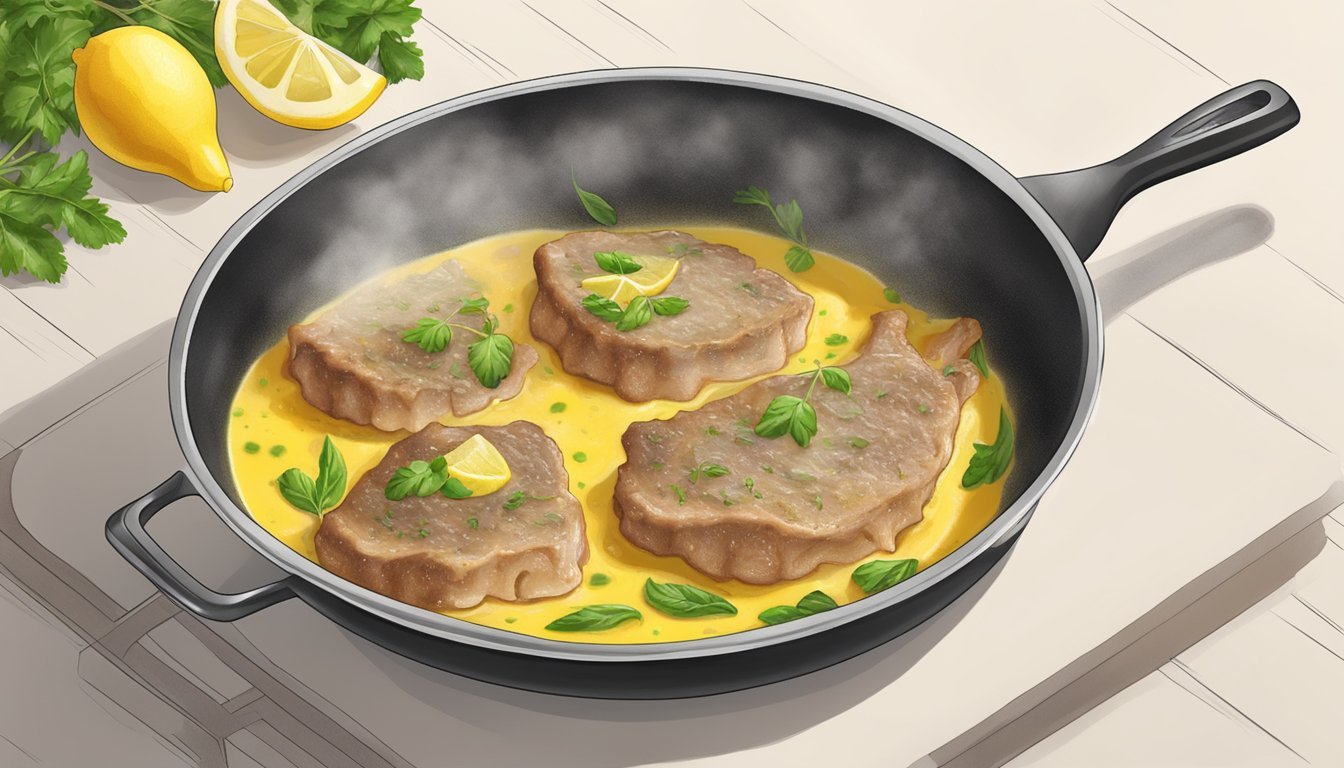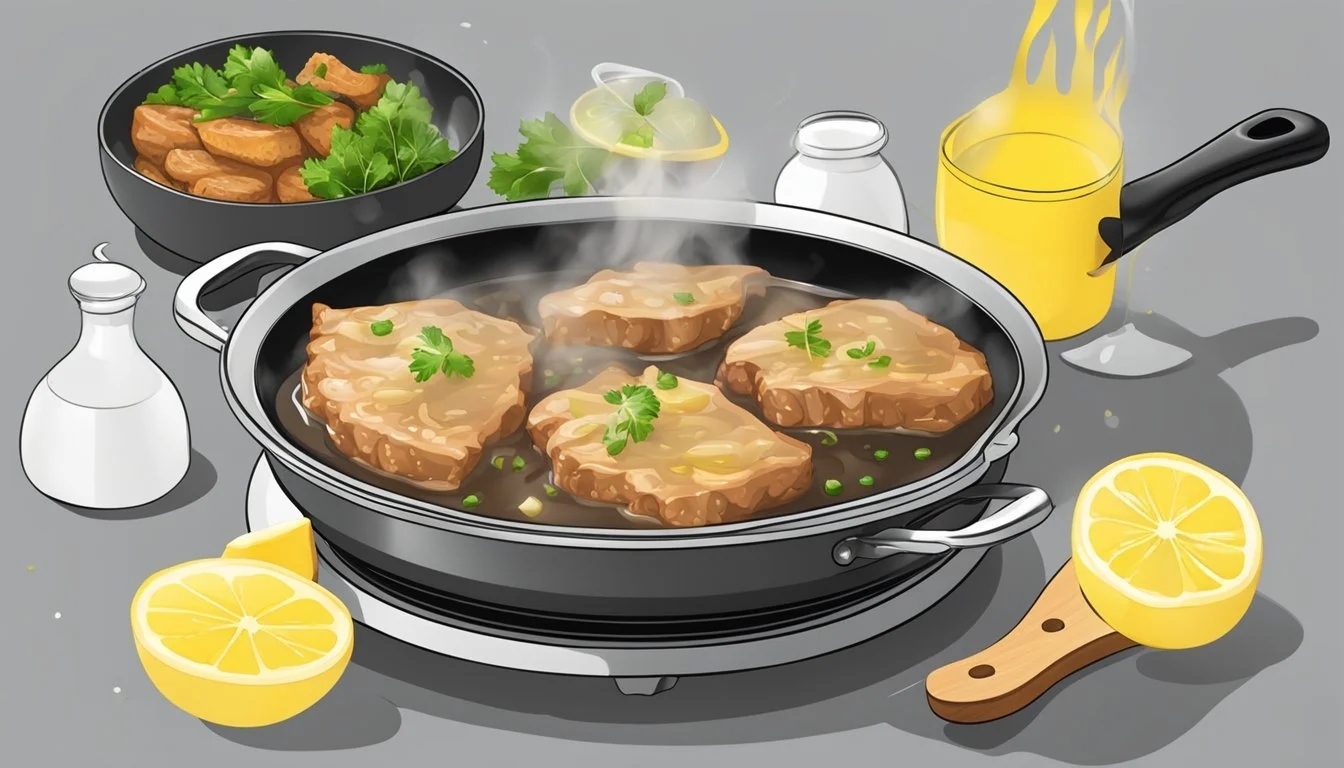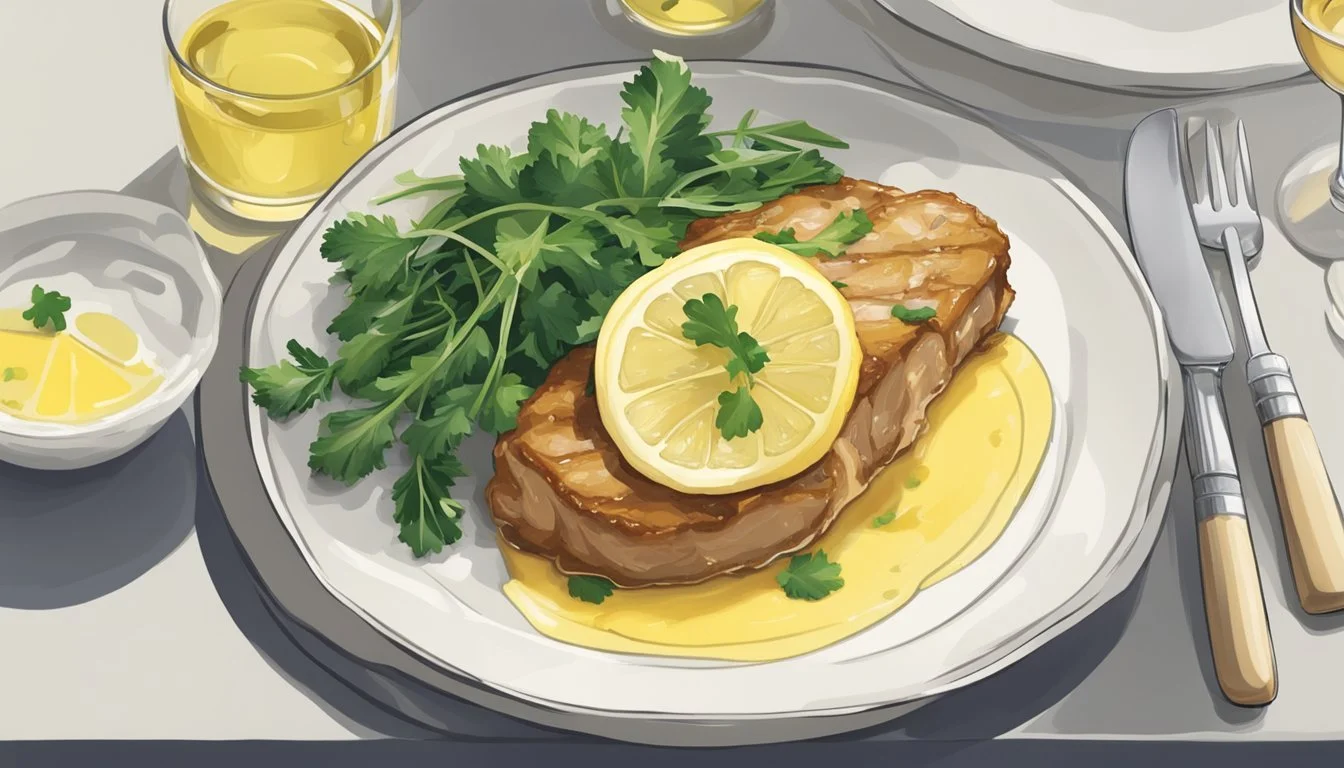Best Way to Reheat Veal Francese
Tips for Maintaining Flavor and Texture
When considering the best methods to reheat Veal Francese, preserving its tender texture and the integrity of its lemony sauce is paramount. Veal Francese is a delicate dish featuring thinly pounded veal cutlets that are lightly floured, egg-battered, and sautéed until golden, complemented by a zesty lemon-butter sauce. The challenge when reheating lies in maintaining moisture and flavor, which can easily be compromised if improper reheating techniques are applied.
Reheating Veal Francese, or similar dishes such as Veal Parmesan, requires a gentle approach to prevent overcooking the meat and ensuring the sauce doesn't separate or lose its velvety consistency. Veal Parmesan, often dressed with a tomato-based sauce and melted cheese topping, shares similar concerns as both dishes include a tender veal component that is susceptible to drying out and sauces that need careful attention to retain their character.
For both Veal Francese and Veal Parmesan, the method selected for reheating should take into account the dish's components, aiming to achieve a close replication of its original taste and texture. Whether utilizing the oven to thoroughly warm the meat without drying it out or choosing the microwave for a quicker option with added moisture to keep the meat succulent, the primary goal remains: to reimpart the freshly cooked appeal of the veal and its accompanying sauce.
Understanding Veal Francese
Veal Francese combines tender veal with a zesty lemony sauce, offering a delicate balance of flavors and textures. This dish's success lies in the quality of its ingredients and an understanding of its preparation.
Ingredients and Preparation
To prepare Veal Francese, one begins by gathering the following:
Veal cutlets: Thinly sliced and typically tenderized
All-purpose flour: For coating the veal
Eggs: Beaten, often with added Parmesan cheese, to dip the flour-coated veal
Lemon juice: Freshly squeezed to infuse the dish with its characteristic citrus flavor
Butter and olive oil: For frying and adding richness
White wine and chicken stock: Deglazing the pan to form the base of the sauce
Heavy cream: Sometimes used to add a luxurious texture to the sauce
Parsley: Freshly chopped, for garnish and a pop of color
The veal is dredged in flour, dipped in an egg mixture, and then pan-fried to a golden hue. The sauce—featuring lemon juice, white wine, and chicken stock—is then created in the same pan to capture all the flavors.
Characteristics of Tender Veal
Veal Francese is known for its:
Tenderness: Achieved by using high-quality veal cutlets and a careful cooking process to avoid overcooking.
Flavor: Mild and subtly sweet, it allows the lemony sauce to shine through.
Each cutlet must be thin enough to cook quickly yet remain juicy and succulent, which is key to the dish's delicate texture.
The Role of Lemony Sauce
The lemony sauce in Veal Francese is essential, providing:
Acidity: Cutting through the richness of both the veal and the butter.
Flavor profile: Enhancing the tender veal with bright and tangy notes.
The preparation of the sauce involves deglazing the pan with white wine and chicken stock, with added lemon juice to perfect the balance, imparting a robust yet refined taste.
Pre-Reheating Considerations
Before reheating Veal Francese, one must take into account critical food safety measures and appropriate storage practices to maintain the quality and safety of the dish.
Food Safety Guidelines
When handling leftovers, it is of utmost importance to ensure that Veal Francese is cooled rapidly to prevent bacterial growth. The internal temperature should drop from 140°F to 40°F (60°C to 4°C) within 2 hours post-cooking. Using an airtight container is essential for preventing contamination and keeping the veal moist. Should the veal be stored for more than a couple of days, it's advised to freeze it to preserve quality.
Cooling: Rapidly chill to safe temperature
Storage: Airtight container in refrigerator
Freezing: If storing for extended periods
Storing Leftover Veal Francese
After Veal Francese is prepared for storage, it's necessary to store it correctly in the fridge. The goal is to retain the meat's tenderness and the lemony sauce's flavor profile. Here are key points to consider:
Refrigeration: Must be below 40°F (4°C)
Container: Airtight to preserve moisture and taste
Reheating vessel: Choose proper container for either oven or frying pan use
Avoid leaving the veal at room temperature for prolonged periods, as it falls into the "danger zone" for bacterial growth, and always reheat to an internal temperature of at least 165°F (74°C) to ensure food safety.
Reheating Methods Overview
To best preserve the delicate texture and tangy sauce of Veal Francese, consider the nuances of three reheating methods: oven, stovetop, and microwave, each ensuring the meat stays tender and flavorful.
Oven Method
Recommended equipment: An oven-safe dish, aluminum foil
Steps:
Preheat the oven to 325°F (165°C) to avoid overcooking.
Place Veal Francese in the dish and add a small amount of stock to prevent dryness.
Cover the dish with foil to trap steam and retain moisture.
Heat for 10-15 minutes or until just heated through.
Stovetop Method
Recommended equipment: Skillet
Steps:
Heat a skillet on medium heat and add a bit of broth or water.
Once simmering, place the veal in the skillet.
Cover with a lid and allow to reheat gently for a few minutes until warmed.
Microwave Method
Recommended equipment: Microwave-safe plate, plastic wrap or microwave-safe cover
Steps:
Place the veal on the plate with a tablespoon of water to maintain moisture.
Cover with plastic wrap, puncturing a few holes for steam to escape, or use a vented cover.
Heat on medium power in 30-second bursts, checking the temperature to avoid overcooking.
Step-by-Step Reheating Guide
Reheating Veal Francese requires attention to maintain its tender meat and flavorful lemony sauce. The guide below offers instructions for using an oven, stovetop, and microwave to ensure the dish retains its moisture and taste.
Oven Reheating Instructions
Preheat the Oven: Set the oven temperature to 350°F (175°C).
Prepare the Dish: Place the Veal Francese on a baking sheet or in an oven-safe dish.
Cover with Foil: Loosely tent foil over the dish to keep in moisture and prevent the breading from becoming too crispy.
Reheat: Warm the dish in the oven for about 10 minutes. Use a meat thermometer to check that the veal has reached an internal temperature of 165°F (74°C).
Stovetop Reheating Instructions
Warm the Pan: Heat a skillet over a medium-low flame and add a small amount of butter or olive oil.
Cook Gently: Place the Veal Francese in the pan, turning it occasionally to ensure even heating without overcooking.
Check for Warmth: The veal should be heated through in about 5 minutes, carefully monitor to maintain its tenderness.
Microwave Reheating Tips
Set Up Properly: Transfer Veal Francese to a microwave-safe plate and add a splash of broth or water to keep it moist.
Cover the Dish: Use a microwave-safe lid or plastic wrap, allowing a corner to be vented for steam release.
Reheat in Intervals: Microwave on high in 30-second bursts, checking between intervals until thoroughly heated. Avoid overheating as it can toughen the meat.
Preventing Common Pitfalls
When reheating Veal Francese, maintaining the integrity of each component ensures the dish retains its intended appeal. They must approach the process methodically to prevent the breading from becoming soggy, the meat from losing its juiciness, and the sauce from separating or becoming too diluted.
Avoiding Soggy Breading
Oven Temperature: Preheat the oven to 350°F to ensure a crisp exterior.
Breading Protection: Cover the veal with foil tented to prevent direct exposure to moisture while still allowing heat circulation.
One should gently reheat Veal Francese in an oven-safe dish to prevent the breading from absorbing excess liquid, which results in sogginess. Chef's recommendations include using a foil tent to protect the breading from direct steam and using a moderate oven temperature to reheat evenly without overcooking.
Maintaining Juicy Meat
Low Heat Reheating: Utilize low and slow heating, such as 275°F, to evenly warm without overcooking.
Moisture Retention: Adding a tablespoon of broth can assist in keeping the meat tender.
For the meat to remain juicy, they should reheat the veal at a lower temperature, which can help prevent it from drying out. If necessary, introducing a small amount of broth adds moisture and prevents the veal from becoming tough.
Preserving Sauce Integrity
Separate Sauce: If possible, reheat the sauce separately to manage consistency.
Gentle Warming: A low heat setting helps avoid breaking the emulsion of the buttery lemon sauce.
To ensure the sauce maintains its character, they should gently warm it, preferably in a saucepan over low heat, while stirring constantly. If the sauce is already combined with the veal, careful attention should be paid to not overheat the dish, as high heat can cause the sauce to separate and alter its velvety texture.
Serving and Pairing Suggestions
Choosing the right accompaniments and beverages can elevate the dining experience of Veal Francese, complementing its tender meat and tangy lemony sauce.
Accompaniments for Veal Francese
When serving Veal Francese, one should consider side dishes that will harmonize with its rich flavors without overpowering the dish. A fresh side salad with a light vinaigrette dressing can add a crisp contrast to the meal. Here are some recommended sides:
Pasta: Fresh, al dente pasta lightly tossed in olive oil or butter pairs elegantly.
Zucchini: Sautéed or roasted zucchini provides a nutritious and subtly flavored companion.
Rice: A side of fluffy rice can absorb the delicious lemon sauce and add a comforting texture.
Mashed Potatoes: Creamy mashed potatoes make for a classic pair, especially when infused with a hint of garlic or lemon to echo the main dish’s flavors.
Wine and Beverage Pairings
The choice of beverage should complement the zesty lemon and caper flavors of Veal Francese. Here’s a simple pairing guide:
White Wine: A crisp, acidic white wine such as Pinot Grigio enhances the lemon sauce’s citrus notes.
Red Wine: If one prefers red, a light-bodied choice with lower tannins, like Pinot Noir, would be suitable.
It's commonly agreed that white wine is a more traditional pairing for Veal Francese, aligning with the dish’s delicate flavors.
Leftover Innovations
When dealing with leftover Veal Francese, the options for reinvention are diverse, turning remnants of a previous meal into a fresh culinary experience. This section focuses on creative methods to repurpose Veal Francese, ensuring none of the dish's initial charm and flavor is lost while infusing a new twist into each subsequent meal.
Creative Veal Francese Recreations
Transforming Veal Francese into entirely different dishes can be an enjoyable and resourceful endeavor. One might consider the following:
Veal Parmesan Sandwich: Use thinly sliced leftover veal as a hearty filling for a sandwich. Layer it with mozzarella cheese, a spread of marinara sauce, and place it between slices of garlic bread. Toast until the cheese melts to create a delicious blend of flavors.
Veal Francese Pizza: Begin by lightly sautéing the veal slices to revive their texture. Then, place them atop a pizza base, adding tomato sauce, and a suitable blend of cheeses. Bake until golden and bubbling to produce an innovative pizza variety.
Using Leftovers in New Recipes
Incorporating Veal Francese into new recipes gives the leftovers a second life while maintaining their delectable essence:
Veal Stew:
Cut the veal into chunks and sauté with onions and garlic.
Simmer in a rich broth with diced tomatoes and a blend of herbs.
Saute with Noodles:
Thinly slice the veal and lightly sauté with garlic.
Toss with cooked noodles, a splash of the lemony sauce, and sprinkle with parsley for a quick and elegant pasta dish.
Both techniques invigorate the remnants of Veal Francese with a delightful flair, giving leftovers a well-deserved encore in the kitchen.








